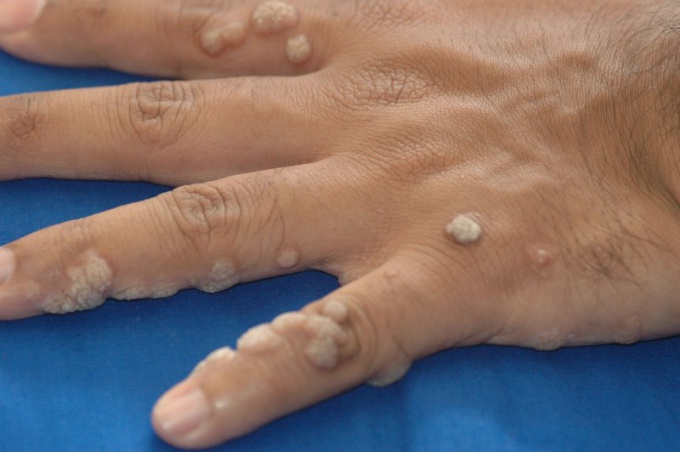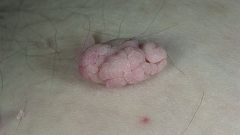Papilloma
Papilloma - benign tumor originating from epithelium. Simply, it's a simple wart. Appears on the skin under unclear circumstances. Can meet on the skin or on the mucosa, e.g. in the mouth and nose, the sinuses and pharynx, esophagus and larynx, bronchi and trachea, renal pelvis and ureter, vagina, and cervix, as well as many other places. They often appear in people older whose immune system is lowered. But the younger generation papillomas may appear after the transfer of infectious diseases, as well as after the use of certain medications over a long period of time.
Looks like a papilloma?
Papilloma is very similar to the wart. It has an uneven surface that resembles a cauliflower. The color is both light and dark brown. In science they are divided into papillomas-warts, plantar, accrochage, threadlike, vulgar, which also differ in appearance. There is a version papillomas originate from Trichomonas, which are separated from the human body connective tissue. Its surface resembles a chicken's comb. Papillomas can be of different sizes. Is microscopically small warts up to 1 mm and larger up to 2 cm in diameter. Early in the development of papilloma has a light and Nude, which over time develop into more brown shades.
Methods of infection
This virus is most commonly transmitted through everyday life. In this case, papillomas will be placed on the neck and chest, armpits and eyelids, around the eyes. Warts can appear as single or multiple. This type of virus can also be transmitted sexually. In this case, papillomas will be located on the genitals. For example, in men, they are referred to as genital HPV and placed near or on the tip of my penis. Women this kind of wart is most often the labia.
Treatments
To treat papillomas alone is strictly prohibited. After all, there is a greater likelihood that they will continue to grow. And women can affect the development of cancer of the ovaries or cervix. Such negative tumors should be removed immediately. Treatment methods are different, but they are divided into pharmacological (antiviral drugs), mechanical (thermal cauterization of chemical substances), surgery (under local anesthesia is cut with a laser) and immunomodulatory (drugs that increase immunity).





